Virtual Reality in Physical Rehabilitation: Evidence, Applications, and Clinical Integration
Perspectives on Emerging Technology in Physical Therapy and Allied Health Medicine
The integration of virtual reality (VR) technology into musculoskeletal and allied health services represents a significant advancement in our therapeutic tool set. As technology-enhanced interventions increasingly demonstrate efficacy in controlled trials, clinicians must understand both the mechanisms of action and appropriate implementation strategies for these modalities. This editorial examines the current evidence supporting VR integration into physical therapy practice and provides a framework for clinical adoption.
Digitized Clinical Environments: Advancing Precision in Rehabilitation
Traditional rehabilitation environments impose inherent constraints on therapeutic progression. The digital transformation of therapeutic spaces through VR and immersive technology enables advanced control over environmental variables, allowing clinicians to create precise rehabilitation processes customized to individual patient needs.
Current evidence suggests extensive clinical efficacy in the neurological and orthopedic patient population, where virtual environments can be systematically manipulated to challenge specific sensorimotor deficits while controlling for extraneous variables. A 2023 meta-analysis by Chen et al. demonstrated statistically significant improvements in upper extremity function following VR-based interventions compared to conventional approaches, with moderate effect sizes (https://www.jmir.org/2022/6/e24111/ ).
The capacity to recreate functional environments with graduated complexity offers clinically important advantages in cases where context-specific rehabilitation is essential. This functional enhances neuroplastic adaptations through environmental enrichment mechanisms previously documented in literature. (https://www.sciencedirect.com/science/article/abs/pii/S0306452224007474 )
Neuroplasticity and Attention-Enhanced Rehabilitation
The neurophysiological basis of motor learning requires active engagement, repetition, and structured feedback, elements that VR systems can systematically optimize. The gamification process in many VR platforms leverages attentional mechanisms that may fundamentally alter how rehabilitation exercises engage neural circuitry.
Recent functional neuroimaging studies have demonstrated increased activation in attentional networks during VR-based therapy compared to conventional exercises matched for physical demands. This enhanced cortical engagement may partially explain the accelerated motor learning observed in several prospective trials. Corticomotor excitability, as measured by transcranial magnetic stimulation, shows significantly greater modulation following VR-enhanced therapy sessions versus traditional approaches. (https://pmc.ncbi.nlm.nih.gov/articles/PMC11227774/ )
The clinical significance of these neurophysiological findings remains an active area of investigation. However, emerging evidence supports the hypothesis that VR’s multisensory engagement may optimize neuroplastic conditions during critical rehabilitation periods. (https://pmc.ncbi.nlm.nih.gov/articles/PMC10740852/ )
Immersive Therapeutic Environments: Clinical Applications
Immersive VR environments offer novel solutions to several persistent challenges in musculoskeletal and rehabilitation care, including attentional fatigue, exercise adherence, and kinesiophobia. The documented analgesic effects of immersive VR during therapeutic exercises may be particularly beneficial in populations where pain limits functional progression.
In post-surgical rehabilitation, several randomized controlled trials have demonstrated that VR-based protocols result in significantly greater exercise volume while maintaining equivalent or reduced pain scores compared to standard care. This volumetric advantage may be clinically significant, as total repetition volume remains one of the strongest predictors of functional recovery across multiple rehabilitation domains. (https://bfpt.springeropen.com/articles/10.1186/s43161-024-00246-y#:~:text=Fifteen%20RCTs%20with%201%2C046%20participants,Introduction)
For vestibular rehabilitation and balance disorders, the controlled visual flow and multisensory integration afforded by VR systems allows for precise vestibular challenge progression that conventional methods cannot achieve. A 2024 systematic review found strong evidence supporting VR-based balance and fall prevention and rehabilitation, particularly for patients with persistent symptoms refractory to traditional approaches. (https://pmc.ncbi.nlm.nih.gov/articles/PMC10815791/ )
Quantitative Assessment and Data-Driven Clinical Decisions
Perhaps one of the most significant advantages of VR integration is the capacity for continuous, objective measurement and collection of viable clinical data, beyond rudimentary range of motion measurements. Unlike conventional observational assessment, VR systems can quantify subtle changes in movement quality, spatiotemporal parameters, and functional performance with a high level of precision. (VerityXR Clinical)
This measurement precision addresses a long-standing limitation in rehabilitation medicine: the relative insensitivity of conventional measures to detect incremental improvements in movement quality. The capacity to document these subtle progressions may be particularly valuable in cases where recovery plateaus according to traditional outcome measures.
The automated nature of these assessments also introduces standardization that may reduce inter-rater variability in multi-provider settings. As value-based care models increasingly emphasize measurable functional outcomes, the objective documentation capabilities inherent in VR platforms may become increasingly important from both clinical and administrative perspectives. (https://pmc.ncbi.nlm.nih.gov/articles/PMC10276472/ )
Personalized Rehabilitation: Optimizing Individual Recovery Trajectories
The adaptive nature of modern VR rehabilitation platforms introduces the possibility of personalized rehabilitation approaches. By continuously monitoring performance metrics, these systems can automatically adjust challenge levels based on individual capacities and learning rates.
This adaptive capability addresses a fundamental challenge in rehabilitation practice: providing the optimal level of challenge to maximize recovery without inducing frustration or failure. The ability to maintain patients in this “therapeutic sweet spot” may enhance both neuroplastic adaptation and psychological engagement throughout the recovery continuum.
The low footprint and and the capabilities of many VR platforms further enhance personalization by extending clinical monitoring beyond traditional care settings. This extended monitoring enables more frequent assessment and intervention modifications than standard visit schedules typically permit.
Implementation Considerations: Moving from Evidence to Practice
Despite growing evidence supporting VR’s efficacy, several implementation barriers remain. Rigid clinical workflows within allied health industries, low level of digitization within traditional clinics, and reimbursement uncertainties continue to limit widespread adoption. The evolving landscape of both technology and healthcare policy suggests these barriers may diminish over time.
For clinicians considering VR integration, a two -phase approach is advised. Exploration of available VR systems, VerityXR leading the way, and others, followed by clinical integration. Initial applications might focus on specific patient populations where evidence is most robust, such as stroke rehabilitation or vestibular disorders. As clinical expertise develops, broader applications can be systematically introduced with appropriate outcome monitoring.
Patient selection remains an important consideration, as not all individuals may benefit equally from VR interventions. Current evidence suggests that cognitive status, technology familiarity, and specific impairment characteristics may moderate treatment effectiveness. Further research is needed to develop evidence-based selection algorithms.
Future Directions and Research Imperatives
As VR technology continues to evolve, several opportunities for future growth emerge. First, dose-response relationships require further exploration to establish optimal treatment protocols. Second, predictive models identifying ideal candidates for VR interventions would enhance clinical decision-making. Third, comparative effectiveness studies against best-practice traditional approaches remain essential to determine where VR offers the most significant advantages.
The integration of VR with other emerging rehab technologies, such as wearable technology, in clinic health tech systems, are an important frontier to explore further therapeutic effects. This may be the ideal bridge between clinical and academic practices within the rehabilitation communities.
Conclusion
Virtual reality technology offers scientifically grounded advantages in rehabilitation medicine that address fundamental limitations of conventional approaches. The digital transformation of therapeutic environments, enhanced neuroplastic conditions, immersive engagement, quantitative assessment capabilities, and personalized progression algorithms collectively represent a significant advancement in rehabilitation methodology.
As with any emerging technology, integration based on current evidence rather than uncritical adoption is an important first step. Physical therapists and allied health professionals have an opportunity to lead this integration process, ensuring that technological innovations enhance rather than detract from patient-centered care.
For clinicians interested in exploring VR integration into practice, resources are available through professional organizations such as the American Physical Therapy Association (APTA.org) and technology providers specializing in rehabilitation applications (e.g., VerityXR.com). Our professional growth is directly dependent on our ability to bring rehab community to the modern age of in-clinic digitization and digitalization.



4 Comments
Denniskab
July 24, 2025
https://ping.space/
MichaelJoupt
July 26, 2025
https://ufo.hosting/vps-vds/windows-vps/cheap-windows-vps
MichaelChice
July 30, 2025
catamaran rental
Cesarrow
August 7, 2025
https://auctionwheels.info/cars/dodge/models/caliber/pagination/start